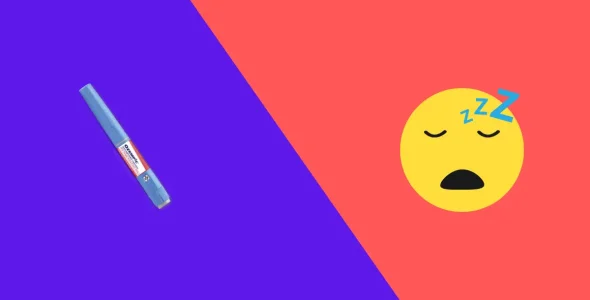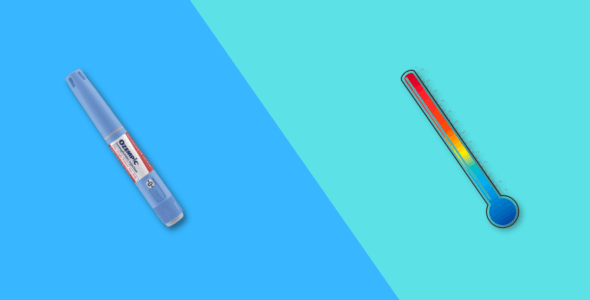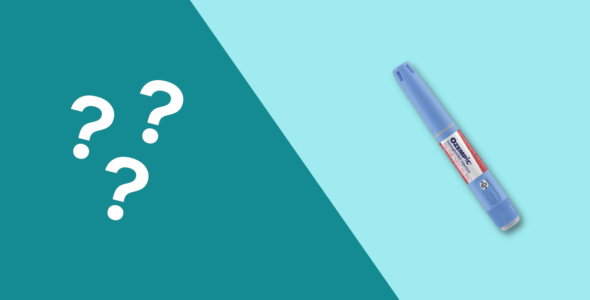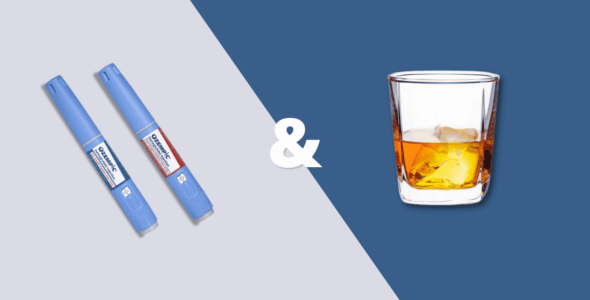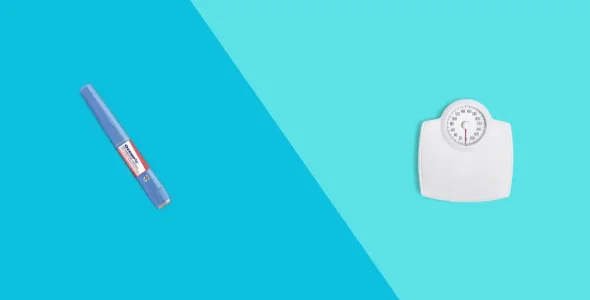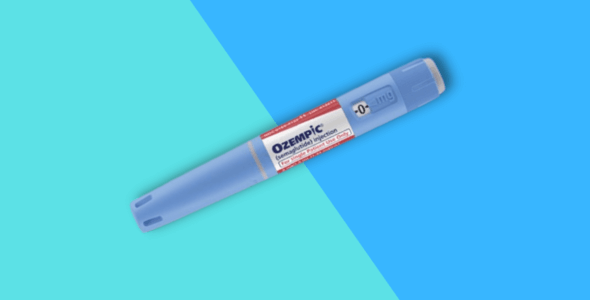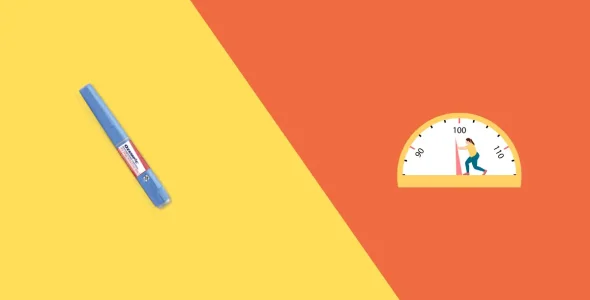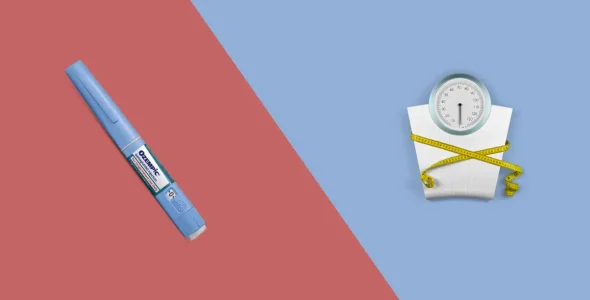What is the best time of day to take Ozempic?
Key highlights
- Ozempic (semaglutide) is a subcutaneous injection administered in your abdomen, thigh, or upper arm once every week. It can be taken with or without food.
- You can inject Ozempic at any time of the day, but take it on the same day every week.
- Some people prefer to take Ozempic at night so they can sleep through potential side effects like nausea but it’s also possible to inject Ozempic earlier in the day.
- Although you don’t need to take Ozempic around the same time as eating, some people find that eating bland foods around the same time as taking Ozempic can help with nausea.
- Ozempic side effects will typically decrease over time as your body gets used to the medication.
- It can be helpful to add a calendar notification so you remember when to take Ozempic every week and to choose a time that you’ll be most likely to remember.
Ozempic is a prescription drug approved for type 2 diabetes and used off-label for weight loss. Semaglutide, the active ingredient in Ozempic, belongs to a class of drugs called GLP-1 receptor agonists. GLP-1 (glucagon-like peptide-1) receptor agonists promote the production of insulin by the pancreas to regulate blood sugar levels and reduce appetite. They also improve heart health and lower the risk of stroke and heart attack. If you do not prefer injections, you can ask the healthcare provider for the oral tablet form under the brand name Rybelsus.
Ozempic pens are pre-filled disposable injections administered under the skin of the stomach, upper arm, or thigh on the same day every week at any time that is most convenient for you.
Learn more about the best time to inject Ozempic and other tips for establishing a weekly schedule that works best for you.
When should I inject Ozempic?
The manufacturer Novo Nordisk mentions that you should take Ozempic injection once every week, on the same day of the week, every week, but offers flexibility in selecting your dosing schedule. You can choose any day and time according to your convenience and preference. Healthcare providers typically start patients on a starting dose of 0.25 mg weekly and increase to 0.5 mg weekly after 4 weeks. The dose can be increased further by your healthcare provider depending on your tolerance for side effects. Ozempic is injected under the skin of the abdomen, upper arm, or thigh and the injection site should be rotated to avoid skin irritation.
Should I take Ozempic in the morning or at night?
Some people prefer taking Ozempic at night before sleeping to avoid dealing with its side effects like nausea during the day. Others prefer to inject the medication early in the morning to ensure they do not miss the dose. The medication is just as effective regardless of what time you inject it.
It is important to note that Ozempic needs to be injected on the same day every week so if you inject on Sunday for example, that means that you should inject on every Sunday. You may change the day of your dose but make sure you take the next one at least two days after your latest dose.
Should I take Ozempic with meals?
You can take Ozempic with or without food. Some people who experience nausea as a side effect find that taking Ozempic around the same time as eating bland foods while avoiding spicy, greasy and sugary drinks and foods. Ozempic doesn’t get absorbed inside the stomach so it shouldn’t make a difference if you take it with or without food.
Should I take Ozempic separately from other medications?
While Ozempic can interact with other medications, it does not necessarily need to be taken at other times. Interactions can typically be mitigated with dosage changes and/or monitoring by your healthcare provider.
As GLP-1 medications such as Ozempic slow digestion, the absorption of other oral medications you are taking may be affected. Speak with your healthcare provider about what you can do to screen for possible interactions with your other medications while taking Ozempic.
What should I do if I miss a dose of Ozempic?
It is best to maintain a dose schedule that is most convenient for you so you do not miss your weekly scheduled Ozempic injection. If you happen to miss an Ozempic dose, take the missed dose within 5 days of missing the dose. In case you realize the missed dose after five days, skip it, and inject Ozempic on your next regularly scheduled day instead and resume with your regular once-weekly dosing schedule.
What is the best place to inject Ozempic?
Ozempic is a subcutaneous injection administered under the skin of the stomach (abdomen), upper arm, and front of the thigh. The medication is equally as effective regardless of which of these three Ozempic injection sites you choose.
Whether you administer the first dose into your abdomen, thigh, or upper arm, make sure to inject it in a different location every time. Administering the medication at one location continuously can lead to injection site reactions with symptoms like swelling, itching, pain, or redness around the injection area.
Tips for maximizing results with Ozempic
Whether you take Ozempic for diabetes or weight loss, exercising regularly and eating a healthy diet will help you achieve optimal results when using Ozempic. Here are a few tips for maximizing results with Ozempic.
Healthy diet
Ozempic reduces your appetite by delaying digestion. However, you can lose body weight only if you monitor your calorie intake when taking Ozempic or other medications like Wegovy. Healthcare professionals suggest a nutrition-rich, low-calorie diet when using Ozempic. Lean protein and fiber-rich diets are encouraged. At the same time, you should avoid high-fat, high-sugar, and processed foods. Learn more about about what foods to avoid with Ozempic.
Vitamins and supplements
Vitamin and mineral supplements can promote weight loss and blood sugar regulation when taking Ozempic, metformin, and other type 2 diabetes medications.
Vitamin D has shown benefits in weight loss and insulin sensitivity in patients with type 2 diabetes. At the same time, studies have also shown a correlation between low B12 levels and obesity so taking vitamin B12 supplements to maintain healthy B12 levels can promote weight loss.
Supplements like Chromium, Omega-3 fatty acids, and Coenzyme Q10 also help improve insulin resistance and weight loss. Chromium has been seen to increase lean body mass and decrease the percentage of body fat, promoting weight loss. Furthermore, studies have shown the role of chromium picolinate in reducing insulin resistance and lowering the risk of cardiovascular disease.
Research on the role of Coenzyme Q10 in the management of diabetes-induced cardiovascular complications showed that CoQ10 supplementation lowers blood glucose levels and increases insulin sensitivity. It has also lowered blood pressure in hypertensive individuals
Hydration
While doctors suggest drinking plenty of water to stay healthy, it is even more important when taking semaglutide medications. Side effects of Ozempic like diarrhea and nausea or vomiting can lead to serious dehydration if not managed properly.
You may have the following symptoms if you’re dehydrated:
- Extreme thirst
- Sweating and urinating less than usual
- Dark-colored urine
- Dry mouth
- Dry skin
- Dizziness
- Muscle cramps
Drinking water throughout the day can help replenish your body. You can also add electrolytes to the water after consulting your doctor. Avoid fizzy drinks or caffeine-based beverages to prevent dehydration.
Physical activity
You can maximize the effect of Ozempic with lifestyle changes, including nutritional meals and exercise. Physical activity helps you stay in shape and lose weight more effectively. Moreover, the combination of semaglutide and aerobic training has been seen to improve β-cell secretory function in patients with type 2 diabetes. As a result, there was a decrease in blood sugar level on taking Ozempic with aerobic exercise.
Ozempic side effects
Ozempic shows promising results in type 2 diabetes mellitus and weight management. However, like other glucagon-like peptide-1 (GLP-1) agonists, Ozempic also has some side effects.
The common side effects of Ozempic include gastrointestinal symptoms like:
- Nausea
- Diarrhea
- Stomach pain
- Vomiting
- Constipation
Besides these common side effects, some people also experience serious side effects, including:
- Low blood sugar (hypoglycemia)
- Changes in vision
- Serious allergic reactions
- Kidney problems (kidney failure)
- Inflammation of your pancreas (pancreatitis)
- Gallbladder problems
Moreover, the SUSTAIN 6 clinical trial by Novo Nordisk showed an increased risk of diabetic retinopathy in patients taking Ozempic. A relationship between rapid glucose lowering and worsening of retinopathy has been reported in patients with type 1 diabetes. The medication also has a boxed warning for thyroid c-cell tumors (thyroid cancer).
RELATED: Ozempic side effects and how to avoid them
Ozempic and alcohol
While you can drink alcohol while taking Ozempic, it’s not an ideal combination. According to the American Diabetes Association, hypoglycemia is the most important concern related to alcohol consumption in patients with diabetes. At the same time, hypoglycemia is one of the serious side effects of Ozempic use. Eventually, consuming alcohol when taking Ozempic can increase the risk of fatally low blood sugar levels.
Alcohol is a calorie-dense drink, making it an unsuitable choice when you want to lose weight. You might not realize that alcohol use could be contributing to a plateau in weight loss when taking Ozempic which can lead to unintentional weight gain.
Healthcare professionals suggest avoiding drinking alcohol with GLP-1 agonists like Ozempic, Mounjaro, and Trulicity.
Research on male Wistar rats concluded that long-acting glucagon-like peptide-1 receptor agonists suppress voluntary alcohol intake. Results showed the use of semaglutide and liraglutide (two long-acting GLP-1 analogs) potently decreased ethanol intake in rats.
Bottom line
Ozempic is an FDA-approved prescription injectable medication that is prescribed for controlling blood sugar levels in people with diabetes and is also commonly prescribed off-label for weight loss management. It should be taken on the same day each week, at any time of the day that is convenient for you, with or without food.
Some people prefer to use Ozempic at night so they can sleep through the side effects such as nausea, while others prefer to take it first thing in the morning which helps them not to forget to inject the medication. The medication is equally as effective regardless of the time you take it. Most importantly, you should remember to take Ozempic on the same day each week.
Pick any day that suits you and inject your dose the same day every time. In case you forget your weekly dose, take it within five days. If you remember the missed dose after five days, skip it, and take the next regularly scheduled day. You can change the day of Ozempic use, but make sure you take the next dose at least two days after the last injection.
Consult with your healthcare provider if you have any questions about the best time to inject Ozempic.





